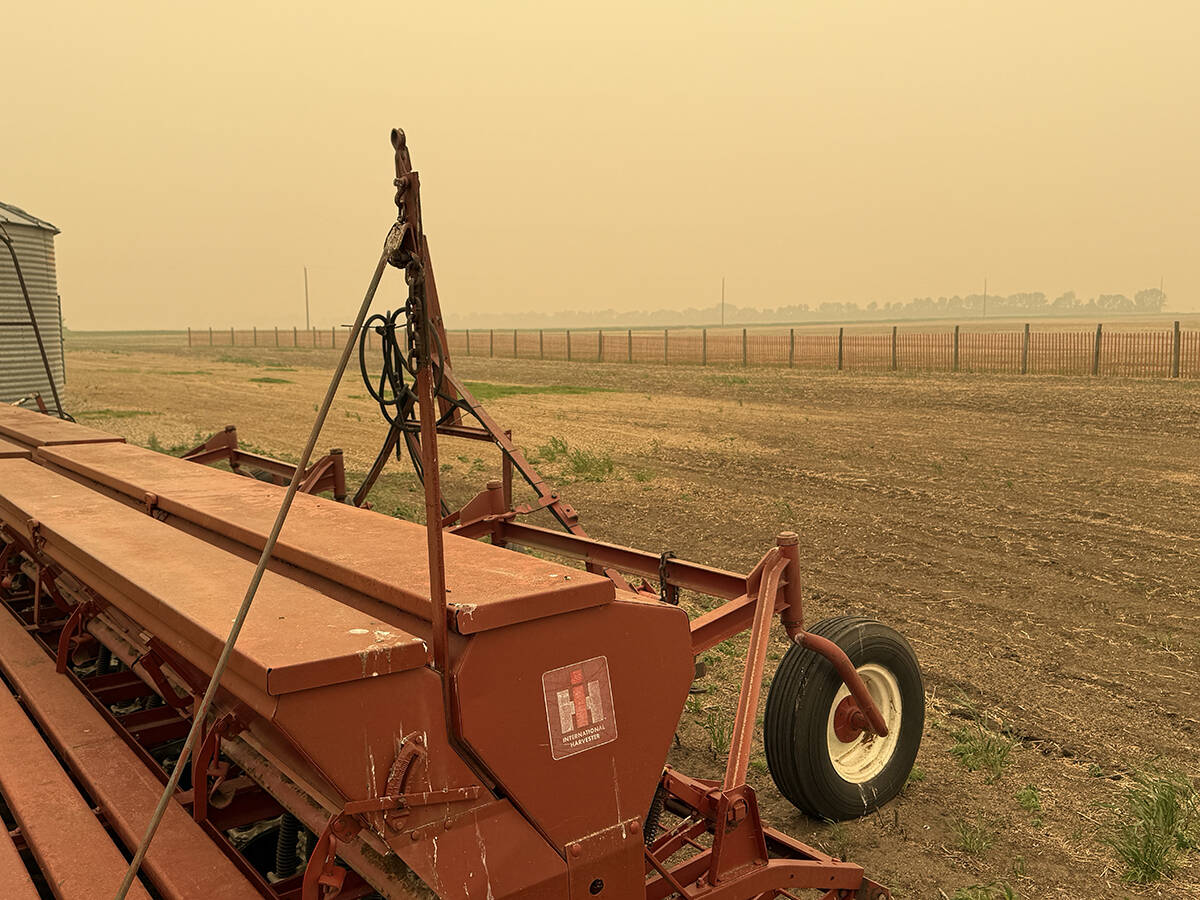Commodity groups applaud the federal government for its work on negotiating free trade agreements but say there is one noticeable omission.
Cameron MacKay, director general of the Trade Negotiations Bureau at Canada’s Department of Foreign Affairs, Trade and Development, recently provided an update on Canada’s FTA negotiations.
He told delegates attending the 2014 Saskatchewan Agriculture Trade Summit that Canada has 11 agreements in force and is in ongoing negotiations on another 11.
That prompted a question from the audience.
“I can’t help but to notice that China is not on the list,” said Jim Everson, vice-president of government relations with the Canola Council of Canada.
Read Also

Wildfires have unexpected upside this year
One farmer feels smoke from nearby wildfires shrouded the July skies and protected his crop from the sun’s burning rays, resulting in more seeds per pod and more pods per plant.
MacKay said China is a trading partner that can’t be ignored. In fact, it is Canada’s second biggest partner behind the United States.
There has been an ongoing dialogue with the Chinese government and there are trade commissioners on the ground to support Canadian exporters. But there are plenty of hurdles when it comes to negotiating an FTA with the economic powerhouse.
“China is really unique. It presents challenges that no other economy and no other nation presents to Canada,” said MacKay.
“We have to be very careful about how we move ahead with China. We don’t want to make mistakes.”
Patti Miller, president of the Canola Council of Canada, said the government is doing a terrific job on negotiating deals and providing the support that keeps trade flowing.
But she said bilateral trade discussions with China have been on the back burner while the Canadian government focuses on the Trans-Pacific Partnership (TPP) agreement.
She thinks it is time to take the next step and start FTA negotiations with China, which is Canada’s largest canola customer.
MacKay said Canada is hard at work negotiating a number of agreements but the Comprehensive Economic and Trade Agreement (CETA) with the European Union dwarves all others.
“It is the most important trade agreement we have negotiated since the NAFTA (North American Free Trade Agreement) by far,” he said.
It is far more comprehensive than NAFTA and will be a benchmark for future FTAs.
CETA will eliminate more than 95 percent of EU agricultural tariffs when fully implemented, including immediate duty-free treatment for canola oil and all processed beef and pork.
Durum and high quality wheat will be locked in at a duty-free rate and substantial tariffs on low and medium quality wheat, rye, barley and oats will be phased out over seven years.
The agreement establishes duty-free quotas for beef, pork, bison and sweet corn.
An agreement in principal was signed on Oct. 18, 2013, but it will likely be two years before it comes into force while negotiators finalize technical issues, lawyers vet the document, translators translate it into 23 languages and parliaments in both regions approve the pact.
Completing the Trans-Pacific Partnership agreement is the next focus for the federal government.
“It’s definitely the next big thing. The opportunities in Asia of course are enormous,” said MacKay.
There are about 800 million people in the Trans-Pacific Partnership, which includes Canada, Australia, Brunei Darussalam, Chile, Japan, Malaysia, Mexico, New Zealand, Peru, Singapore, the United States, and Vietnam.
“We are optimistic that we will be concluding the TPP deal soon.”
Canada is also negotiating a separate bilateral FTA with Japan, which deals with trade issues not included in the TPP. There have been several rounds of negotiations on a FTA with India, which is Canada’s largest pulse crop market.
“Negotiations are going slowly, frankly and the Indians are heading into an election in April or May of this year,” said MacKay.
There are also ongoing negotiations with Ukraine, Morocco, Israel, the Caribbean community, Cost Rica and a collection of other Central American countries.
MacKay said bilateral agreements are important but the federal government is still committed to concluding the DOHA round of negotiations at the World Trade Organization.
He said more progress was made at the Bali Ministerial Conference in December 2013 than many people realize with the signing of the Trade Facilitation Agreement.
“This is an agreement in which all 160 members will take on certain obligations to cut red tape at the border,” said MacKay.
“Some people may find that dull but that’s typically where trade gets held up is at the border.”
The World Bank estimates that 40 percent of the value of a WTO agreement is captured in that Trade Facilitation Agreement.
“This frankly was no small success. It was a significant one,” he said.















